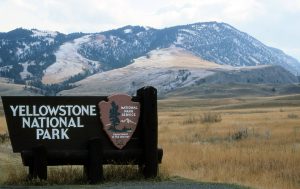The New York Times put together a spectacular interactive presentation on the effect of climate change on Yellowstone Park. In our own back yard, Glacier Park is undergoing similar changes. Kudos to Debo Powers for spotting this one . . .
On a recent fall afternoon in the Lamar Valley, visitors watched a wolf pack lope along a thinly forested riverbank, ten or so black and gray figures shadowy against the snow. A little farther along the road, a herd of bison swung their great heads as they rooted for food in the sagebrush steppe, their deep rumbles clear in the quiet, cold air.
In the United States, Yellowstone National Park is the only place bison and wolves can be seen in great numbers. Because of the park, these animals survive. Yellowstone was crucial to bringing back bison, reintroducing gray wolves, and restoring trumpeter swans, elk, and grizzly bears — all five species driven toward extinction found refuge here.
But the Yellowstone of charismatic megafauna and of stunning geysers that four million visitors a year travel to see is changing before the eyes of those who know it best. Researchers who have spent years studying, managing, and exploring its roughly 3,400 square miles say that soon the landscape may look dramatically different.
